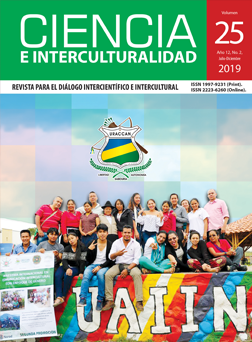Weaving Art and Intercultural Communication, to Continue Living as Originative Peoples
DOI:
https://doi.org/10.5377/rci.v25i2.8577Keywords:
Intercultural communication, Spiritual communication, Tissue, Art, Mother earth, Wisdoms, Spiritual guides, TulpaAbstract
The present cultivation and breeding of knowledge and knowings (CCRISAC) was carried out in Toribio community from the Nasa indigenous people located 123 kilometers from Popayán city, capital of Cauca department, Colombia. The findings highlight the great knowledge of the community with the fabric of art and intercultural communication as part of the wisdom they practice from the heritage of their ancestors and the commitment assumed to keep the culture alive. These wisdoms are rooted in spiritual communication, which determines the awakening of gifts and physical maturation in the life cycles of NASA culture. The word UM in the Nasa Yuwe mother tongue translates tissue and is derived from UMA, the woman who possesses wisdom, is the word that also defines ART. From this worldview it is understood as art, that is to say; Um, it is the space to weave wisdom, offer and cheer the spirits of mother earth. Weaving these wisdoms of indigenous art, required many spaces for reflection in tulpas (fire place), with spiritual guides who, in addition to opening the way to scrutinize these wisdoms, were the direct researchers among nature and who accompanied the spaces of knowledge. Likewise, within these spaces of cultivation and breeding of wisdoms, the Cxapik School of arts of Cecidic played an important role, a space that allowed to experience art, communication and spirituality directly.
Downloads
878
HTML (Español (España)) 499
EPUB (Español (España)) 373
Resumen (Audio) (Español (España)) 294
Abstract (Audio) 227
Downloads
Published
How to Cite
Issue
Section
License
Copyright © (URACCAN)

This journal is licensed under a Creative Commons Attribution-NonCommercial-NoDerivatives 4.0 International License.
This license allows others to download the works and share them with others, as long as their authorship is acknowledged, but they can not be changed in any way nor can they be used commercially.




